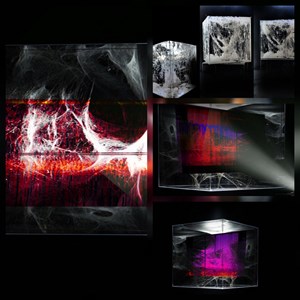
"In the few past months of isolation while all kind of performances and concerts were canceled, a public dialogue opened around the support of artists in Athens, Greece. Artists have found themselves again unprotected and full dependent on government decisions and lack of state care for the arts".
Image: The Plexiglass Cube – Echo, 2019
Angelina Voskopoulou was born in Athens, Greece. She earned a BA in Fine Arts and Technology and a Master’s degree in Digital Arts at University of the Arts London. She was the course leader in Digital Arts at Iversity (Berlin-based online education platform). Her practice spans videos, performances, and sculptures made from polyester.
Voskopoulou is the co-founder and director of ‘State of flux’ dance group and member of Visual Container – The first Italian Videoart platform and distributor. Her work has been shown in many festivals and institutions in USA, London, Paris, Hong Kong, Greece, Canada, Argentina, Morocco, Spain, Bulgaria etc.
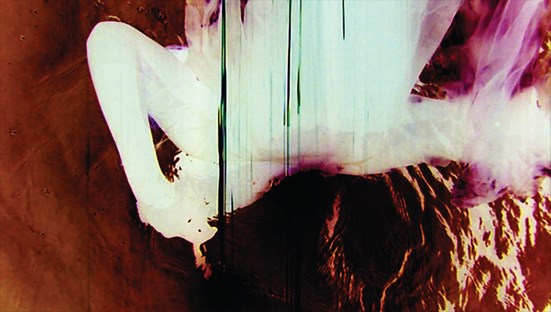
Exogenesis, Trilogy experimental film, 2010 – 2013
She has received the London Creative Awards LICC, the International Caravaggio Award in Milan, and the Frida Khalo Prize “for video poem” among others.
Art Dependence (AD): Do you have any thoughts on whether that’s a responsibility of artists, reflecting our time is important within the political context?
Angelina Voskopoulou (AV): In the few past months of isolation while all kind of performances and concerts were canceled, a public dialogue opened around the support of artists in Athens, Greece. Artists have found themselves again unprotected and full dependent on government decisions and lack of state care for the arts. How will this period be portrayed in theater, literature, cinema, music and canvases? Culture is, as is well known, the most suitable ground for policy-making. Theater, since ancient times, has been the pre-eminent laboratory of democracy. In the aftermath of the Covid-19 pandemic, artists are looking for new ways. Whether artists, will have the government policy against them or by their side, certainly will determine the type of internal and external struggle that will take place in the field of culture. The challenge is always the same: their ideals to meet the reality their living in and to become part of the reflection of the institutions themselves and not the other way around.
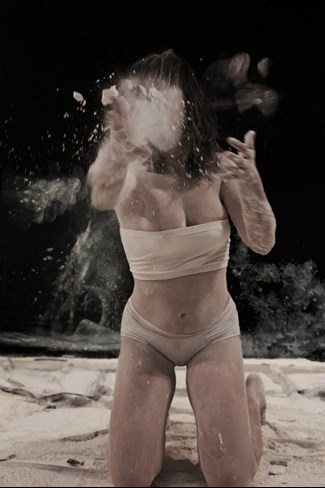
Behind this page but not disappearing, experimental film 2015
Art influences society by changing opinions, instilling values and translating experiences across space and time. Cinema, painting, sculpture, music, literature and the other arts are often considered to be the repository of a society's collective memory. As a cultural tool, art helps actualize the emotions, grievances, and fears of those who may not have another place to voice concerns.
Art inspires to action. It’s truly important for an artist to reflect. Art has the ability to transport us to a different time and place and it serves as healer, educator, lover and friend.
Humans have used their abilities to create images for social engagement and political motives from the beginning of their existence. What these visual images mean depend on the context in which image is created, for what purpose it is created, by whom it is created. There are so many artists and art movements that were part of bigger societal ideas, and helped forming them.
AD: What is your main interest as artist? What form of self-consciousness is applicable to the art-making?
AV: Artistic activity is considered to be one of the basic activity of denaturation, which comes from the need of the creator to symbolize unconscious, fragmentary representations of life. My video works represent the Universal and the unconscious via choreography. This creates an artistic abstraction from which the audience is “allowed” to initially trust its instincts to understand and learn. Dreams and traumas are the content of this unconscious, and the screen dance art is to externalize these and enlarge them, so that they become available, ultimately, to the gaze of the other. It’s something you can feel.
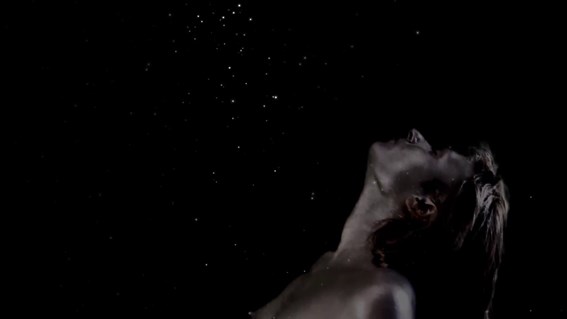
Skin deep – An hymn to Eros, Experimental film, 2014 – 2015
AD: Do you feel that it’s important to convey your own beliefs and opinions within your art? Is there a philosophical element in your work?
AV: Art is about connecting with people’s emotions. It’s personal and at the same time, universal.
The heart of my films, despite the concept, is the body and its movement. Even though choreography is somehow forgotten in movie making, what makes that so powerful is actually the editing process. When I create a video work, for the most part, I am creating video dance, (also known as screendance), I am not documenting. I am making dance for the camera. I choreograph a piece knowing that I will re-organize and ‘manipulate’ the material during the editing process combining elements such as time, space, speed and spatial composition. In addition, one incorporates the movement of the camera, as well as the composition of the frames. Even though the body in movement is the ‘seed’ and inspiration of screen dance, often the movement phrases get ‘throw’ around, the end becomes the beginning, the body gets fragmented and layers of dancers end up superimposed into different backgrounds, creating a new work which in some cases is far apart from the movement material that it was based on. My decisions are based on the rhythm and composition of the new piece, as well as on the design, contrast and the proximity to the camera. I am trying to create a visual metaphor using a combination of both, narrative and location. The concept of a video choreography, in my films, is based on my own lyric texts and ideas.
What I am dealing with is the effects, the perception, and the visual effects of my work as proposals, as an open space, so that you can get there things you always wanted to feel and maybe didn't know how to express, imagine, watch, observe, whatever. This is so far away from the strong screenplay, the beautiful movie, etc
I work through lyric imagery, in poetry it’s a form of literature that uses aesthetic and rhythmic qualities of language such as sound symbolism, and metre to evoke meanings in addition to, or in place of, the prosaic ostensible meaning. Imagery draws on the five senses, namely the details of taste, touch, sight, smell, and sound. This way leads the way to all of my experimental films. It’s like a dream stage situation. It's like we have sleeping emotions in us all the time, half-sleeping, so one specific image or the combination of one image and sound, or the way of putting things together, like two images one after another, what we call montage, editing - these things ring a bell. These half-asleep feelings just wake up because of that - that is what it is about.
AD: What are you currently working on? Is there anything in particular that you’d like to get across through your work?
AV: Yes, I am working on a film collective which I co-working with two colleagues of mine which will be released on Eye’s walk digital festival next summer. It’s a challenging idea. Each one of us has a unique role in this video making. The use of a Camera as a third eye. The spectator’s eye. The camera can be so closely affiliated to the body, it can actually allow the screen dance audience to be anywhere with it. It is like you look through camera directly to audience's eyes. Τhis is a way to communicate everything included. It can be sculptural and photographic at the same time. So in every movement and in every form there is an intensity Motion is a duet between the body and the camera, the camera has been choreographed in relationship with it in a very precise way. We are aware of the camera's presence and the fact it has a role, an identity and watch over us... observe us trying to get closer to us...enters the space where we are in and work together...like there is no escape, trying to find a language, is like a dead body standing up, and talked about the dead things inside dancing with it.
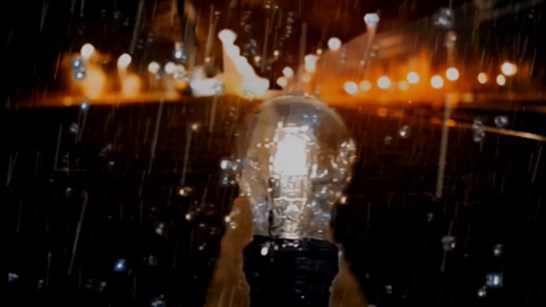
Video still from The heart in our mind experimental film, 2017
The dance of the unconscious, an expression of what we have not been able to express, of thoughts and feelings that are buried deep inside, beneath our conscious awareness.
It deals with the dark side of human beings and reflects things that people don’t want to face. The timing and movements are not set.
We want to uncover movement, not tell the dancer what to do. Instead, try to give the dancer a task, something to do physically along with a visualization, acknowledging emotions like anger, fear, and sadness, and letting them go...
AD: What place does creativity have in education ? Do you view yourself as a creator?
AV: Being creative helps you become a better problem solver in all areas of your life and work. Creativity helps you see things differently and better deal with uncertainty. Creative people are better able to live with uncertainty because they can adapt their thinking to allow for the flow of the unknown. The education system lacks of creativity.
The main reason for the loss of creativity is the way that children are being educated. The arts are seen as less important than math, history and science by schools. Children are required to take years of the “core classes” while the more creative curriculum is almost discouraged…
If I view myself as a creator? This is a tricky question and really hard to answer it. Well,I love dreamlogic. I love the feeling. Ideas come to me from walkingaround, from riding my bike, you don’t know when they’re going to popin your head. An idea isn’t there, and then, here it is, an idea enters the consciousmind. For me, doing things is helpful to coming up with ideas.
It feels so good, catching ideas and I’ve got the energy to do them. In film, I get ideas, I write them down, and then I try to translate this and get that feeling on film. Along the way, new ideas can come in and fit in…the puzzle isn’t finished ’till it’s finished…some ideas don’t fit and they’re thrown away… so, who you are is unique and all your own…Your own life creator.
AD: Do you think that by challenging conventional views, art can truly make a change in the public’s perception?
AV: Yes, I think art can change the public’s perception but I think it is something that takes time and a lot of work, not only for the artists but the society in general. The public has to be open to question their perception of the world. Art presents reality in a way that may change the vision and perspective of audience towards the world. It works as catalyst that sifts facts from assumptions and blends these with imagination so that fresh meaning could be created. It can motivate people to turn thinking into doing.
AD: How has your work developed since you began and how do you see it evolving in the future?
AV: The most difficult part for me was to find my means of expression, when I came across with experimental filmmaking that was my moment!
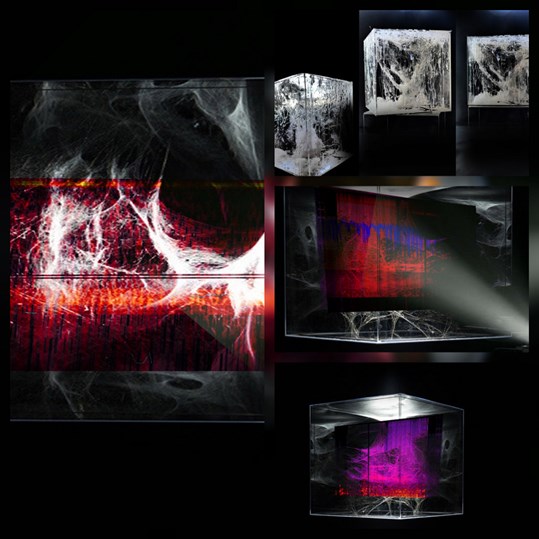
The Plexiglass Cube – Echo, 2019
My video works is a combination of technology, dance, body, poetry and lots of experimentation.
The technology allows me to feel more, not less, connected to what I am creating. Technology is reshaping what art is and how it’s produced. The body is a tool, a study material that connects us to the primordial self, to the animal instinct, to earth, to the world. Looking for our limits, our fears, in a ritual which looks like a mirror of a world that has something absurd and something amorphous at the same time. An exploration of motion in relation to the subject-body. The movement is not defined by the moving body , not necessarily, but includes also the movement of the camera the editing process, the relationship between movement and sound or the absence of sound. In this process the body goes through a journey a transformation that is changing and shaped by the movement of the camera and the general vision of the cinematographer. A meeting point of dance and cinema.
Something mysterious that leads to understanding the often emotional and destructive emotional pulse of human desire.
I don’t know what the future brings but I will use a David Lynch quote “Through the darkness of future past, the magician longs to see, one chance out between two worlds, fire walk with me!”
AD: Is sophistication, aesthetic accomplishment in the eye of the beholder?
AV: The artist speaks first, brings a vision out. The spectator is the addressee of the artwork, he/she receives the vision of the artist.Spectator and artist face and confront each other from different positions. Their respective characteristic attitudes are fundamentally different from each other...but what is all about?Trying to findknowledge of nature’s unrealised ends, art seems to me to be a state of soul more than anything else…
A very interesting example that came across my mind is one from pop culture, The Eye of the Beholder, is episode 42 of the American television anthology series The Twilight Zone.
Now the questions that come to mind: "Where is this place and when is it?" "What kind of world where ugliness is the norm and beauty the deviation from that norm?" You want an answer? The answer is it doesn't make any difference, because the old saying happens to be true. Beauty is in the eye of the beholder, in this year or a hundred years hence. On this planet or wherever there is human life – perhaps out amongst the stars – beauty is in the eye of the beholder. Lesson to be learned in the Twilight Zone.
AD: What do you think is the social role of art? How would you like to be remembered?
AV: Art is communication; it allows people from different cultures and different times to communicate with each other via images, sounds and stories. Art is a tool for social change. I feel art as a companion of change.It does not matter if I amforgotten; what matters is the effect I have on those around me and those who come after me…
AD: How does art school form ideas about art? Does it shape people into being certain types of artists?
AV: It depends on the teacher! If the teacher or mentor leaves freedom for the personal development of the student, then the student can develop its own intention about art.
AD: What do you think about the art world and art market? Do you accept that art is inherently an elitist activity?
AV: There are mainstream institutionalized practices that are managed by galleries, well known curators, and affluent art collectors. Simultaneously, there are also various virtual platforms, alternative physical spaces and art festivals where one can exhibit work accessible to broader audiences.
I believethe art market in nowadays, is evolving to embrace new trends, digital advancements, and young, experimental artists.
Art forms have always been created to communicate important messages and to inspire people to act and think.
AD: What’s the last great book you read? Any other thoughts/projects to share?
AV: Jorge Luis Borges, What can I hold you with? I offer you lean streets, desperate sunsets, the moon of the ragged suburbs. I offer you the bitterness of a man who has looked long and long at the lonely moon…
I am in between new projects. One of them is based on Orphic Myths, specifically on the myth of Persephone, which is a representation of the adventure of the inner life, which in order someone to get to know life better, will sink into mourning, so that can later blossom. It mirrors the power of change. Because people will not be able to experience the changes of seasons passing by if they do not mourn. Only then they will gain a past. And the past is an integral part of the world, of our world. It implies the birth of life. It is the wheat that will die, it will enter the earth in order to be reborn. It is the meaning of destiny.

ArtDependence Magazine is an international magazine covering all spheres of contemporary art, as well as modern and classical art.
ArtDependence features the latest art news, highlighting interviews with today’s most influential artists, galleries, curators, collectors, fair directors and individuals at the axis of the arts.
The magazine also covers series of articles and reviews on critical art events, new publications and other foremost happenings in the art world.
If you would like to submit events or editorial content to ArtDependence Magazine, please feel free to reach the magazine via the contact page.